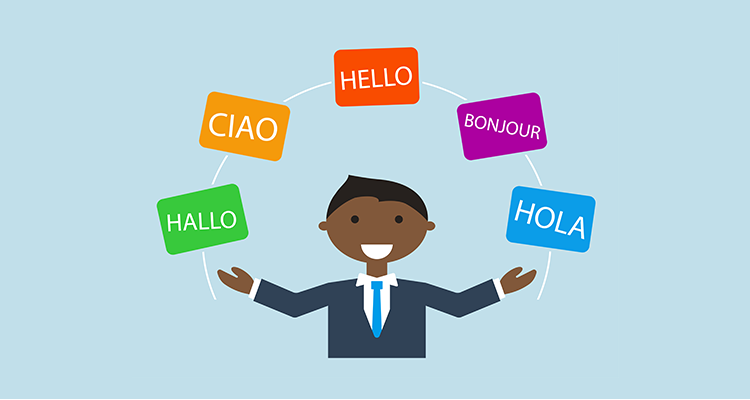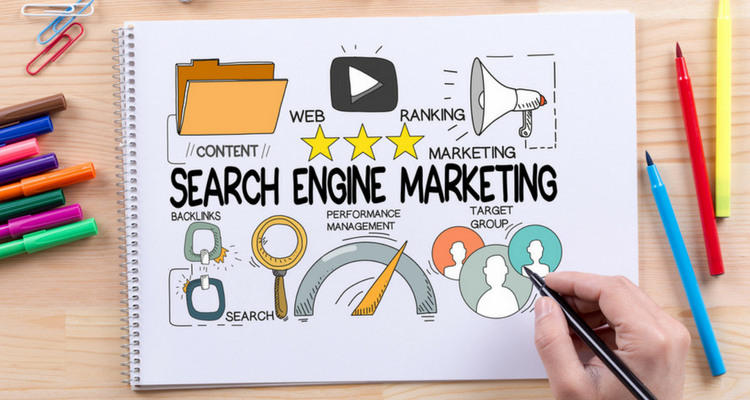Are you resting easy now that you think your company has finally figured out its content marketing? Well, we hate to burst your bubble, but your content marketing journey has just begun. The next big goal for your content marketing team is to get a head start on multilingual content marketing.
Not exactly sure what multilingual content marketing is? As the name implies, the term refers to when you pitch your content marketing to different parts of the world. It’s when you embark on a long-term project of translating your content into various languages such as Chinese, German and French. Here, the idea is to target untapped users in regions who prefer accessing content in their own language rather than in English.
However, don’t mix the two concepts of having a content marketing strategy with that of a multilingual content marketing strategy. Your multilingual content marketing strategy is just the evolved form of what had been your English-only content marketing, available in several languages.
Some content marketers don’t agree with the term “multilingual content marketing” because it doesn’t refer to cultural differences. They argue that the translated content goes beyond a straight translation made by a certified translation provider – it takes into account important cultural norms and nuances.
Such industry experts believe the term “multicultural content marketing” is more accurate. They point out that simply translating an English blog post into another language, without taking into account cultural differences, typically misses the mark with foreign audiences.
However, for the purposes of this article, the conventional term “multilingual content marketing” will be used, even though the point about seriously considering important cultural differences is an important one.
Whether you are still fine-tuning your multilingual content marketing strategy or just thinking about venturing into creating one, here are some valuable tips for a reliable and effective strategy that works in several languages.
1. Keep It Simple
Luckily for all multilingual content managers, Google makes it easy for you to identify content that has been shared in a specific language using hreflang. By using hreflang you can tell Google the language you’re using on any page or post and help Google to show this version to users who are searching in that particular language. Moz have a useful resource about International SEO and the Hreflang Attribute if you would like to learn more.
However, writing 15 articles for an equal amount of websites can complicate matters for the human translation provider if specific local references, such as the mention of a celebrity or a local news event, is mentioned in the article. Keep it simple where possible by avoiding local phrases or real-world mentions that could trip up the translation team and a foreign audience.
This is the strategy to adopt for general pieces, though you should certainly aim to include some articles that are written with local references in mind.
2. Develop New Reader Profiles
The reader profile of your content marketing strategy in English will be very different from that of any other international market. So make it a point to research your new markets and to create new, unique profiles for each country you target.
It might be smart at this point to work with a marketer who is familiar with the local culture you’re targeting. While you might have gathered basic information on demographics, relevant to the country you are targeting, a professional marketer can fill you in on the cultural standards and parameters of your target market that is difficult to obtain via Internet research.
3. Hire a Competent Translations Provider
While you may be tempted to work with automated tools and resources to translate your content, nothing is more professional than having a real human translations provider do the translations work for you. What better than a team who has experience working with marketing materials? That is, one who knows how to adopt the right marketing speak in the target language?
Machine translations are never as good as translations undertaken by a human. So do yourself a favour and spare some investment money into hiring a team of professionals to carry out your translations.
4. Use the Right Social Media Channels
Tangential to developing an effective multilingual marketing strategy is knowing where you will publish and share your posts on social media. Be certain you are targeting the right social media channels when engaging with a foreign audience.
Social media platform VKontakte, for example, is more popular than Facebook in Russia. The Chinese, in turn, are very big on using Qzone rather than the Mark Zuckerberg platform. Missing small details like this can make or break your content marketing strategy.
5. Diversify, Diversify, Diversify
Do consider how diverse your English-speaking target market is. Investigate questions of race, gender, age, location, income, hobbies, marital status, purchase behaviors, etc. Part of having an effective content marketing strategy underway is knowing all the answers to these questions before even considering embarking on a multilingual approach.
When you have to take into account new countries, languages and cultures, not having a well developed content marketing strategy in your home country will only complicate matters. Knowing your own market first – inside and out – will give you a foundation to build your own multilingual strategy in other parts of the world. However, don’t wait too long before eyeing other international markets. You wouldn’t want your competition to get the best of you in the meantime!
For more great content marketing tips, check out these related Marketing.com.au articles:
- How to Build a Profitable Business Using Social Media and Content Marketing
- The Definitive Content Marketing Checklist to Drive Leads
- 5 Tips for Content Marketing Success








